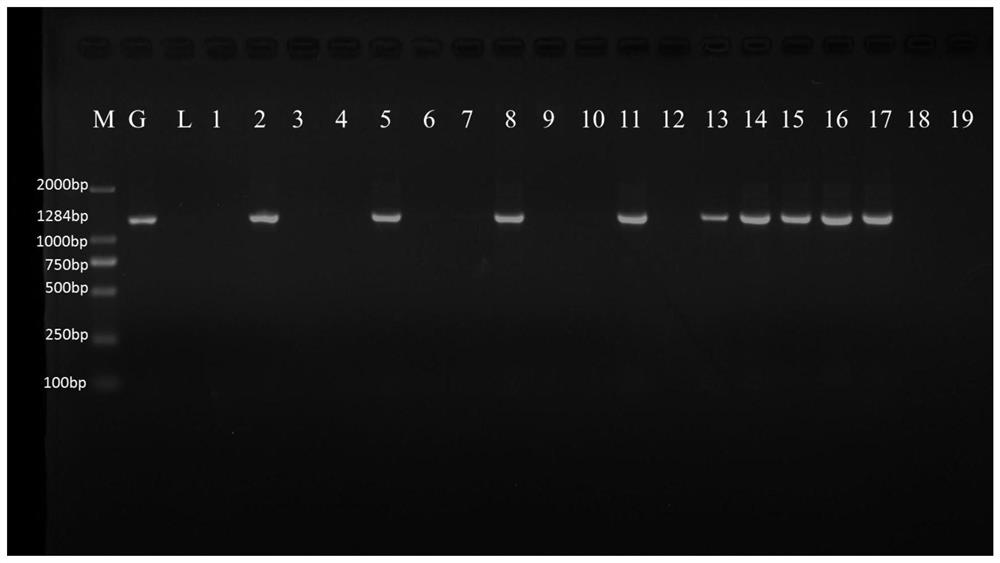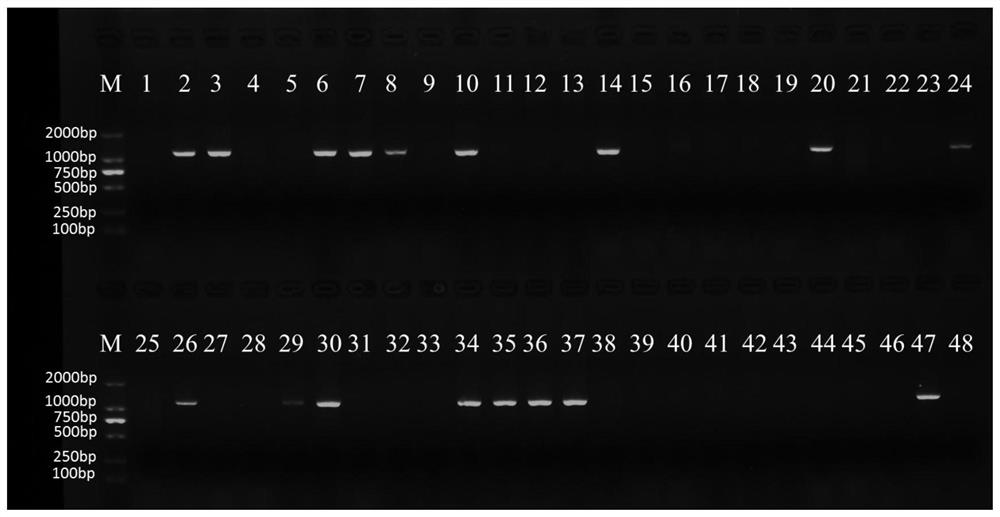Dominant Molecular Marker of Rice Blast Resistance Gene pi67(t) and Its Application
A rice blast resistance gene and molecular marker technology, applied in the field of crop molecular genetics and breeding, can solve the problems of blast resistance phenotype dependence, low breeding efficiency, and difficult identification, and achieve good polymorphism, low cost, and high recombination probability low effect
- Summary
- Abstract
- Description
- Claims
- Application Information
AI Technical Summary
Problems solved by technology
Method used
Image
Examples
Embodiment 1
[0030] Example 1 Location of Rice Blast Resistance Gene Pi67(t)
[0031] Using the blast-resistant rice variety GY8 to cross the rice blast-susceptible variety Liaoxing 1, from F 2 In the first generation, the recombinant inbred line population RILs was constructed using the method of single seed transmission, and the population included 197 lines.
[0032] The above-mentioned obtained strains were planted in the rice blast induction nursery in Liaoning Province, and the resistance of 197 strains and two parents in the above-mentioned obtained population to rice blast was investigated for two consecutive years; the pathogenic response type and race were determined according to the national Evaluation was carried out according to the unified standard of the Joint Test Group of Physiological Races of Magnaporthe grisea (1980). The survey record standards are:
[0033]
[0034]
[0035] The genotypes of two parents and 197 lines were detected by 8K rice gene chips, and a ...
Embodiment 2
[0036] Example 2 Development of molecular markers co-segregated with rice blast resistance gene Pi67(t)
[0037] The rice line GY8 carrying the rice blast resistance gene Pi67(t) and the rice variety Liaoxing 1 not carrying the gene were resequenced by next-generation resequencing technology, and the sequencing data with an average coverage depth greater than 30× were obtained. By comparing the sequences of the two varieties, it was found that the two rice varieties had a 141bp insertion site in the localization region of the rice blast resistance gene Pi67(t), and the rice blast resistance gene Pi67(t) and the Indel site were on the chromosome location, such as figure 1 shown.
[0038] Depend on figure 1 It can be seen that the rice blast resistance gene Pi67(t) is located in the range of 10.18Mb-11.19Mb on rice chromosome 12, and the Indel site is located at 10.93Mb; compared with Liaoxing 1 that does not carry the gene Pi67(t), it carries There is a 141bp insertion in GY...
Embodiment 3
[0046] Example 3 Verification of molecular markers co-segregated with rice blast resistance gene Pi67(t)
[0047] F 2 In the population, the mixture of the rice blast fungus popular in Liaoning area was used to artificially inoculate the individual plants in the seedling stage at the seedling stage, and their resistance to rice blast was identified. and using the primer combination SEQ ID NO: 2 / SEQ ID NO: 3 for F 2 The genotype of each plant in the population was identified.
[0048] The specific test is as follows:
[0049] Using the donor variety GY8 of rice blast resistance gene Pi67(t) and the susceptible variety Liaoxing 1 as parents, F2 populations were constructed as test materials and planted in the greenhouse. The rice blast fungus ZA1, ZA9, ZB1 and ZF1 popular in Liaoning area were respectively transplanted on the oatmeal tomato juice agar medium, and cultured at 25-27°C for 7 days. After growing mycelia and cultivating moisture, the blast fungus will produce a l...
PUM
 Login to View More
Login to View More Abstract
Description
Claims
Application Information
 Login to View More
Login to View More - R&D
- Intellectual Property
- Life Sciences
- Materials
- Tech Scout
- Unparalleled Data Quality
- Higher Quality Content
- 60% Fewer Hallucinations
Browse by: Latest US Patents, China's latest patents, Technical Efficacy Thesaurus, Application Domain, Technology Topic, Popular Technical Reports.
© 2025 PatSnap. All rights reserved.Legal|Privacy policy|Modern Slavery Act Transparency Statement|Sitemap|About US| Contact US: help@patsnap.com



